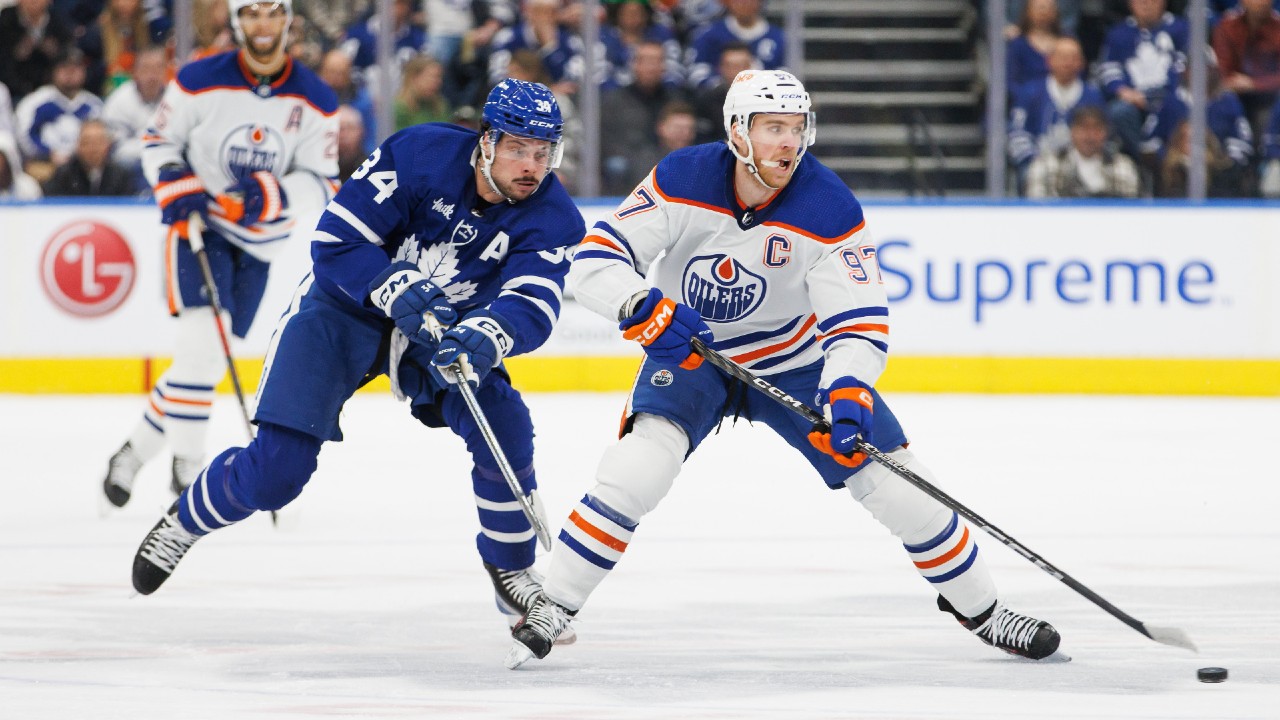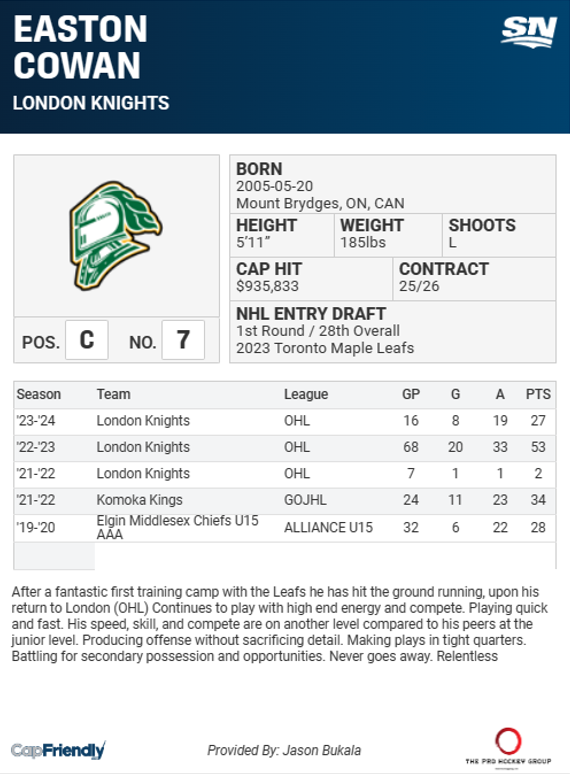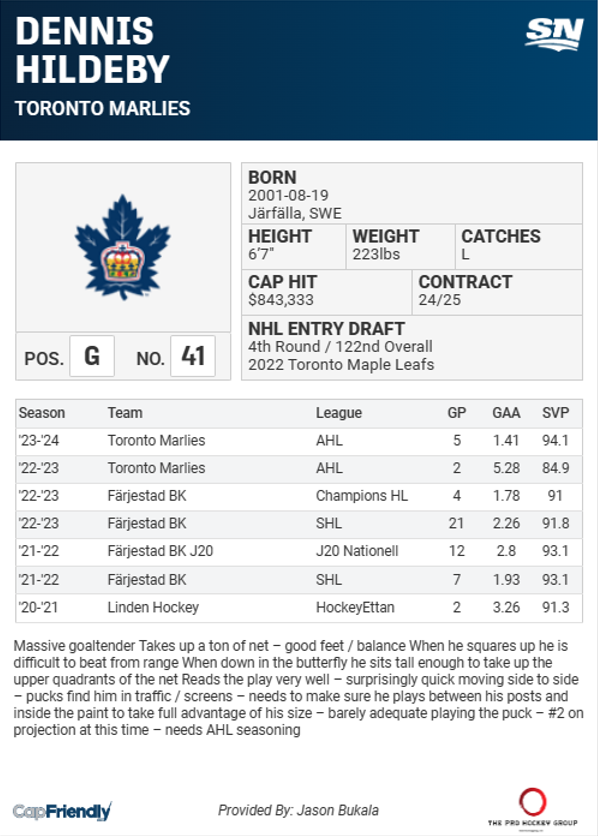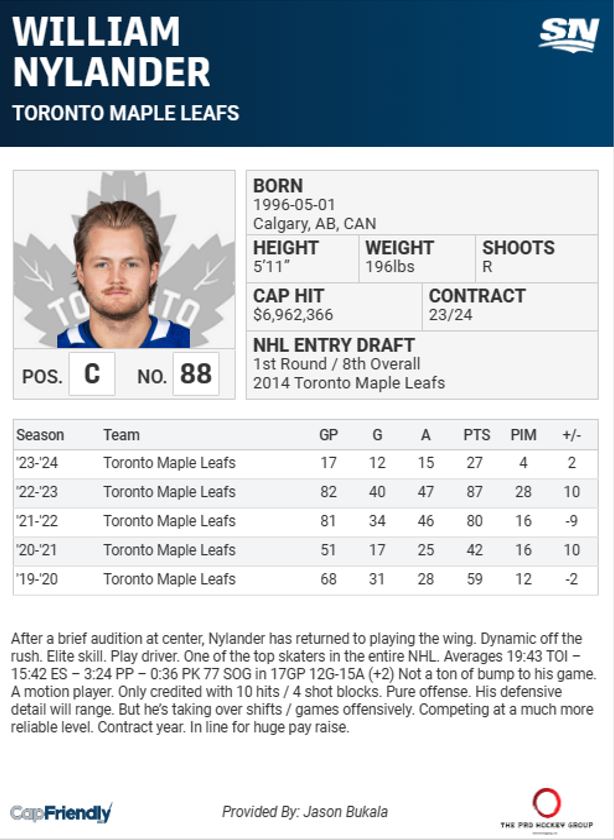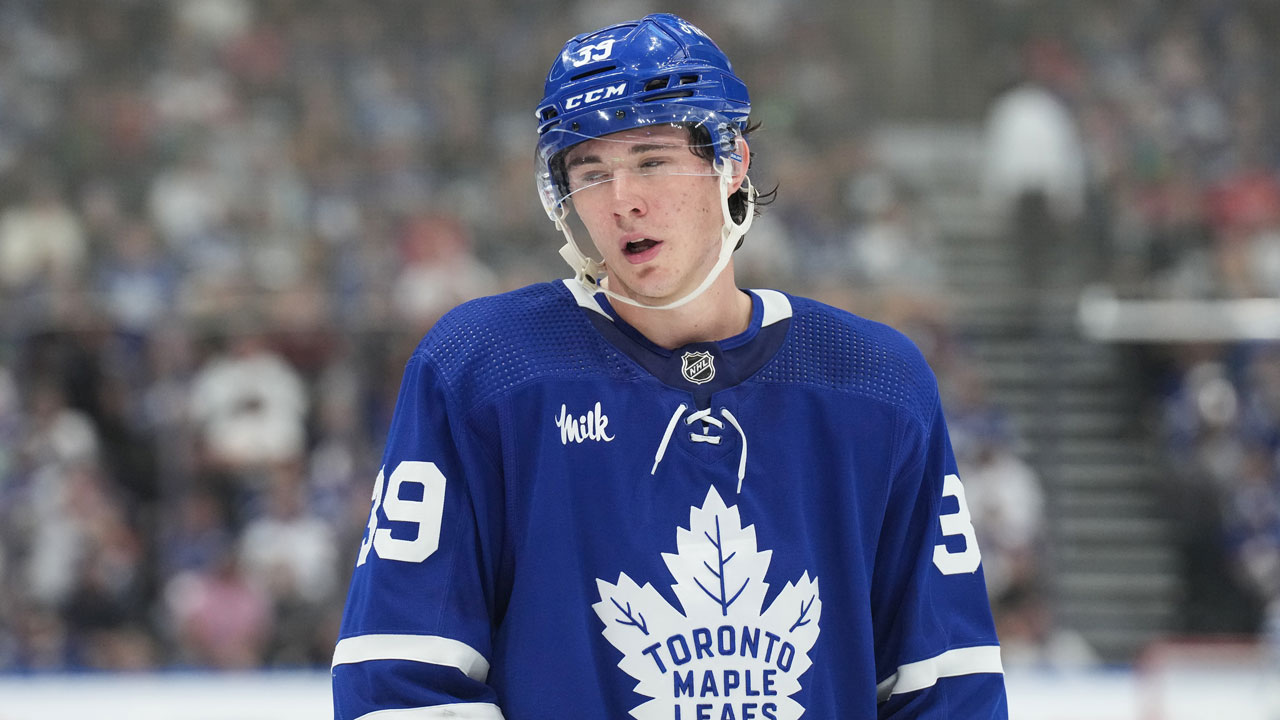
Over the past couple weeks the Toronto Maple Leafs have been linked to the Calgary Flames in trade discussions as it seems the potential sellers have some blue line pieces the Leafs could use. However, I’m positive the Flames aren’t the only team the Leafs have reached out to regarding an upgrade to their defence corps.
We’ve all heard the same names being bandied around as potential targets for Toronto and I see the value in them adding someone like Nikita Zadorov. But of course to make a trade happen Toronto will have to give something up, so I wonder about the actual assets the Leafs have to offer in trade.
With that in mind, I’ve set out to try and assess what the Leafs have to offer up in a trade, both now and in the coming months:
DRAFT CAPITAL
There’s little doubt in my mind a team like the Flames will be looking for draft picks, along with roster players or prospects, in any deal they make involving their pending free agents. Other teams will implement the same sort of strategy as well.
Using the Flames as an example, they could very quickly “reset” their roster if they decided to move out their pending UFAs for picks and prospects. In terms of stockpiling draft picks, here’s what Calgary already has over the next three years:
If the Leafs plan on offering up some of their draft capital as part of a transaction with Calgary or any other NHL club, this is what they have to offer:
Let’s compare Toronto’s draft capital to another Canadian franchise that will be looking to upgrade its roster, specifically the blue line. The Vancouver Canucks are in position to buy this season and if they decide to use some of their draft assets, here’s what they have to offer:
And even a team like the Buffalo Sabres, three points out of a wild card spot at the moment, might feel more pressure to get to the playoffs this season and attempt to make a significant splash in the trade market to get them there. Perhaps they would be willing to invest some of their draft capital, maybe even overpay, to upgrade their roster.
Here’s a look at the Sabres draft grid:
Observation: The Leafs don’t have competitive draft capital. Their grid doesn’t come close to comparing to the two teams I’ve highlighted here, who the Leafs could be competing against on the market. If selling teams are looking for the best possible option(s) to add more picks to their grid, Toronto will be dealing from a position of weakness.
That is, unless the Leafs are willing to empty the cupboards.
There’s always a chance Toronto could really go all in. If GM Brad Treliving believes in this group, he does have his first round pick this year and in 2026 to use as collateral. But if he moves those, the Leafs would be left without any picks in the first two rounds for the next three drafts.
I’ve used Vancouver and Buffalo as examples of who the Leafs could be competing against on the trade market, but they will be far from the only ones. Consider teams like the defending Stanley Cup champion Vegas Golden Knights, who have all of their top three round picks over the next three seasons.
Or the Colorado Avalanche, a contending team yet again that could be active on the market. The Avs still own each of their first-round picks in the next three drafts, and a second-round pick in 2026. Even the past two Stanley Cup winners have draft grids that better position them to buy than Toronto.
It’s going to be difficult for Leafs management to leverage their draft picks against other teams in the league.
So what else could they offer up?
PROSPECTS
Not only do the Leafs lack draft picks in the next three years, they haven’t made a ton of picks to add to their prospect pipeline in the recent past either.
In the past three drafts the Leafs have only made 11 selections, compared to Buffalo’s 30 picks, Vancouver’s 19 and Vegas’ 16. Colorado has made the same number of selections as the Leafs in the past three cycles.
Taking into consideration that Toronto has been positioning itself to win in the playoffs by sacrificing draft picks in trades for a few years now, it’s fair to compare the number of selections they have made to other contending teams that have also invested draft capital. The difference so far, of course, is that Colorado and Vegas have won Stanley Cups in the past two seasons and Toronto has a single round win.
The Sabres have been stockpiling prospects and the Canucks have some really nice pieces on the horizon. Those teams have been in a different mode than the Leafs, with the Sabres “rebuilding” and the Canucks “re-tooling” their rosters, so it’s understandable why they have more futures to work with in trade today.
The point is, Toronto doesn’t have the prospect depth other teams possess and it’s not fair to point the finger at their amateur scouting staff. In fact, the Leafs’ staff has done a nice job identifying potential with the picks they did have. They’ve had fewer swings at the plate, but have made some good picks along the way that could be useful in trade now.
This means the Leafs will have to entertain calls on Fraser Minten and Easton Cowan.
They will be asked about Matthew Knies, but there’s no chance they should include him in a trade at this stage of his development. Knies is already showing he’s capable of skating in Toronto’s top six forward group. He’s a top tier NHL prospect.
Cowan had a fantastic training camp with the Leafs and is on the cusp of “top tier” prospect status. He definitely has trade value. Here’s a look at how Cowan has been trending since being returned to the London Knights of the OHL:
Minten, on the other hand, is off to a considerably slower start to his WHL season (six games played, one goal, six assists). He too had a great training camp with the Leafs before running out of gas when regular season games began. I’m expecting Minten to be a part of Team Canada’s world junior roster next month in Sweden and he’s likely going to be traded to a contending team at the WHL trade deadline. He’s the captain in Kamloops right now, but they are in rebuild mode and currently sit last in the Western Conference.
Minten has the potential to play in the Leafs’ top six in time. He should be considered a top tier prospect for Toronto.
Goaltender Dennis Hildeby, a fourth-round pick in 2022, is off to a solid start with the AHL Marlies. He’s still developing and requires a couple years in the minors before he’s ready for the NHL, but he’s played games at the SHL level (Sweden’s top pro league) and he’s adapting to the smaller ice in North America. At this stage I consider Hildeby a “second-tier” prospect, but he’s trending up overall and could be a nice target for another organization to buy into.
A few other players I would group into the “second tier” of Toronto prospects who could garner trade interest include forwards Nick Roberston, Nick Abruzzese and Roni Hirvonen, and defenceman Topi Niemela.
A college prospect who might interest teams is University of Michigan freshman forward Nicholas Moldenhauer. His element is offence. He doesn’t do a ton of heavy lifting, but Moldenhauer has solid hockey sense and vision in the offensive zone. He will have to learn to position himself better in the trenches and bump opponents more often to extend plays. He scored 30 goals and 45 assists in the USHL last season playing for Chicago and has three goals and five assists in his first 14 NCAA games this season. Toronto drafted Moldenhauer in the third round (95th overall) in 2022.
It looks to me as though the Leafs have some prospects others will value, but just how much remains to be seen. Toronto has options in the pipeline to use in trade, they just don’t have a lot of them.
It’s going to be interesting to see how willing Treliving and his staff are to give up more organizational depth in search of bolstering the NHL roster.
CAP SPACE
Having the assets to make a deal is one thing, but you also need the cap space to add players and the Leafs are right against the upper limit. There’s always the possibility of a player hitting injured reserve, possibly John Klingberg, to open up space. Perhaps their trade partner will be willing to retain some salary in exchange for an additional mid-round pick from the Leafs. But the bottom line is Toronto is in a “money in, money out” position to make any trade fit.
OTHER OPTIONS?
Luckily for the Leafs, right-shot defenceman Conor Timmins looks like he’s close to returning from injury. Timmins was having a fantastic training camp before going down with a lower-body injury. Training camp games aren’t as intense or detailed as regular season contests, though, so it will be interesting to see how Timmins adjusts to NHL games after a presumed conditioning stint with the AHL Marlies.
There’s no time frame for Timothy Liljegren’s return and high ankle sprains are brutal to recover from. But I feel it’s important to keep him in the back of my mind. He’s going to return at some point, hopefully close to 100 per cent, and add depth to Toronto’s roster, or more.
TRADE OUTLOOK CONCLUSION
The Toronto Maple Leafs are dealing from a position of relative weakness overall. Some other franchises have healthier draft grids, while others have much deeper prospect pools. Both categories are integral to making a trade for NHL roster players.
One other category I haven’t mentioned yet is players who possess no-trade clauses. That could either end up working for, or against, the Leafs.
For example, Chris Tanev has a 10-team no-trade list in his current contract and he’s from Toronto. Maybe it works in the Leafs’ favour if they are talking to Calgary about acquiring Tanev.
The bottom line is that while the Leafs do have some assets to work with, they will be sacrificing even more of an already-diminished future in any deal they make in the coming months. Yes, teams can regroup in the off-season through free-agency when contracts expire and open up money to be spent on the roster. But in-house drafting and developing is crucial to the long-term success of any franchise.
Realistically, the Leafs don’t find themselves in an ideal position to trade this season.
AND WHAT ABOUT WILLIAM NYLANDER’S CONTRACT?
Speaking of future cap commitments, the cost to sign pending UFA William Nylander is getting more expensive by the day. I suppose Nylander could always entertain a home team discount to remain in Toronto, but he’s due a substantial raise from his current $6.9M cap hit nonetheless. Here’s a look at what he has provided so far this season:
And here’s what some of the top wingers in the NHL are currently being paid against the cap:
• Artemi Panarin, New York Rangers: $11.6M
• Mitch Marner, Toronto Maple Leafs: $10.9M
• Jonathan Huberdeau, Calgary Flames: $10.5M
• Nikita Kucherov, Tampa Bay Lightning: $9.5M
• Matthew Tkachuk, Florida Panthers: $9.5M
• Mikko Rantanen, Colorado Avalanche: $9.25M
It’s difficult to imagine Nylander willing to take less than what the Leafs have invested in Marner. If he does, it’s safe to say his salary will land between Kucherov and Marner.
In the end, this deal will put more pressure on the cap in the future, which will have to be considered alongside any in-season trades.






